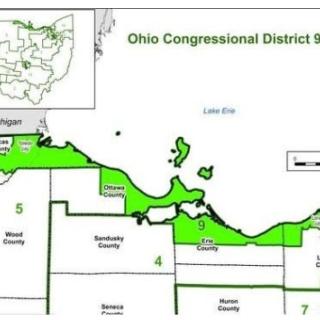Advertisement
As we plow towards Ohio’s primaries this month, the two big parties are predictably gearing up to reward their establishment candidates.
On the Republican side, Ohio’s attorney general Mike Dewine is trying to put the final nail in the coffin of lieutenant governor Mary Taylor’s campaign with million dollar ad buys, calling her “two faced” and challenging her “conservative” credentials. This comes after DeWine is already well on his way to the nomination after receiving the party’s endorsement in February, a process that Taylor criticized as the “good ol’ boys” tipping the race. With all of this support and plenty of money in the bank, DeWine’s ad buys are questionable because the nomination is seemingly in the bag, but his campaign must be worried about Taylor’s attacks having an impact past the primary. Either way, he’s certainly got the cash to blow.
With the Democrats, the establishment is also seemingly worried as the race has tightened between their preferred candidate, former Ohio attorney general Richard Cordray, and his progressive challenger, former congressman Dennis Kucinich. Expectedly, the powers that be are now throwing all they can at the former “boy mayor” of Cleveland, launching attacks against his past statements on Syrian leader Bashar al-Assad as well as President Donald Trump, some of which he made while a commentator at Fox News. This is in addition to some big Democratic names campaigning for Cordray, such as Senator Elizabeth Warren. Considering Cordray left his post at the Consumer Financial Protection Bureau in D.C. to run for Ohio’s top spot, clearly Kucinich’s grassroots campaign has made some Democratic powerbrokers nervous.
Primaries are usually good for these very reasons. It gives a political party a chance to feel out its identity going into a general election and allows candidates to find their footing when it comes to policies and support. It also toughens up the eventual nominees -- while they’ll obviously be challenged by the other side later, primaries force them to be challenged by their party’s base. While our political process is certainly imperfect, primaries are typically a way to keep the party’s leaders in check.
But in Ohio, not every political party gets a chance to participate in the primary process thanks to a dirty trick pulled on minor parties in 2013. That year, the Republican supermajority in the statehouse rammed through a bill called SB 193, which rewrote the rules on how minor political parties are formed in the state. Because of the law, a political party must receive 3 percent of the vote in a gubernatorial or presidential race to retain ballot access for four years. If they don’t, the party is forced to undertake an arduous signature gathering process, for which they must gather upwards of 50,000 valid signatures to form the party again. SB 193 was fought by the American Civil Liberties Union (ACLU) and the Ohio Green Party, but was really designed to hurt the Libertarian Party of Ohio (LPO) as Ohio’s GOP was afraid of the party hurting John Kasich’s reelection bid in 2014. Ohio’s Republicans then went further to remove the LPO’s gubernatorial candidate from the ballot by challenging his signatures via a technicality that had never been enforced, as it’s pretty hard to get 3 percent of the vote when you’re not on the ballot. When Libertarian presidential candidate Gary Johnson received over 3 percent of the vote in the 2016 election, the LPO attempted to have Johnson’s results registered under the Libertarian banner. But because the LPO no longer technically existed in Ohio, Johnson was on the ballot as an Independent and his results were not recognized. Ohio’s Republican-dominated courts have rebuked all of the LPO’s legal challenges up to this point, forcing them to gather 50,000+ valid signatures (100,000 raw signatures to be safe) to regain their party status by August 2018. They’ll miss the primary process and have to spend over $100,000 to do so.
Even for those who disagree with the Libertarian Party’s policies, this is a dangerous precedent for a state to set for minor political parties. While the Ohio Green Party’s gubernatorial candidate received over 3 percent in the 2014 election (many Libertarians voted Green in protest and to show support for minor parties,) what happens if the Greens fail to meet the 3 percent threshold in 2018? Is the party prepared to spend the money and time on the signatures it’ll take to regain ballot access? What happens for new or other political parties that would like to form in Ohio in the future? They’ll likely be unable to entirely.
This is why it’s important to stop the establishment politicians in Ohio this year on both sides and at every level -- if not, they’ll continue to do what they can to stop us.



